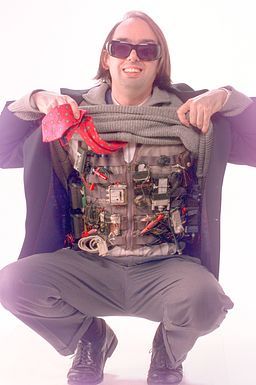On behalf of the Knowledge Transfer Network, presenting the challenge - Things Designed for a Wearable Life
Things Designed for a Wearable Life
● Key challenger: The Knowledge Transfer Network
● Challenge reviewers and insight: Great Recovery, Cleanweb UK, @Barry_W
● Themes: Design, embedded technology, education
Problem Statement/Ideal Situation
How can we encourage, raise awareness or create approaches to “Wearable tech” design and connected “Things” that take environmental and social considerations into account, with strategies that consider open source approaches and embed circular economy thinking into design and complete product or service life cycle. Designing for life!
We have seen an explosion and buzz around wearable tech, smart devices connected by the internet of things, promising new and better ways to monitor, connect and interact with your environment and world around you. These social and environmental benefits however could come at a cost to the circular economy, with possibilities of short life-spans, quickly becoming obsolete, users soon losing interest in their device, objects that once may have been a mono material, such as a t-shirt or table being embedded with electronics and sensors. Often these may be small in size and if it fits in a bin……

[This file is licensed under the Creative Commons Attribution-Share Alike 3.0 Unported license, author Glogger.]
Envisioned outcomes
We would like to either develop practical or inspirational concepts for wearables or hardware related to the internet of things that embody and showcase better Circular Design, or related guidance linking strategies between the tech design world and circular economy.
❖ Hacking a chosen wearable to be more sustainably designed
❖ Ideas for the dovetailing of wearables with new circular economy business models, for example how could embedding wearables in textiles facilitate leasing models or how could embedding wearables create emotional durability
❖ Wearable and internet of things - lifetime mapping - where are the intervention points?
❖ Systems and scenarios that highlight, danger, impact or alternative more sustainable models
❖ Guidance for designers and tech companies in the sector to support circular design
❖ Concepts for the use of wearables in terms of content / education to drive more sustainable behaviour
Constraints
● Available data on current products
● UK market?
Motivations/Barriers
● Increased understanding of products complete impact
● Enabling others to take more consideration of their complete product cycle (and make more informed choices)
● Lack of awareness, consideration in their current development?
Users
Who should the results, approach, solution be aimed at/ for?
Primary: Designers for wearable tech or Internet of things, smart devices, start-ups, businesses within the digital or sustainable arena, Customers
Secondary: Waste and recycling managers, retailers
Partners/ Key Stakeholders
Who may be good to lead, link up, engage with to use communicate, fund?
● Great Recovery & RSA, Map Wearable tech firms, Nike?, Innovate UK, Design Council.
